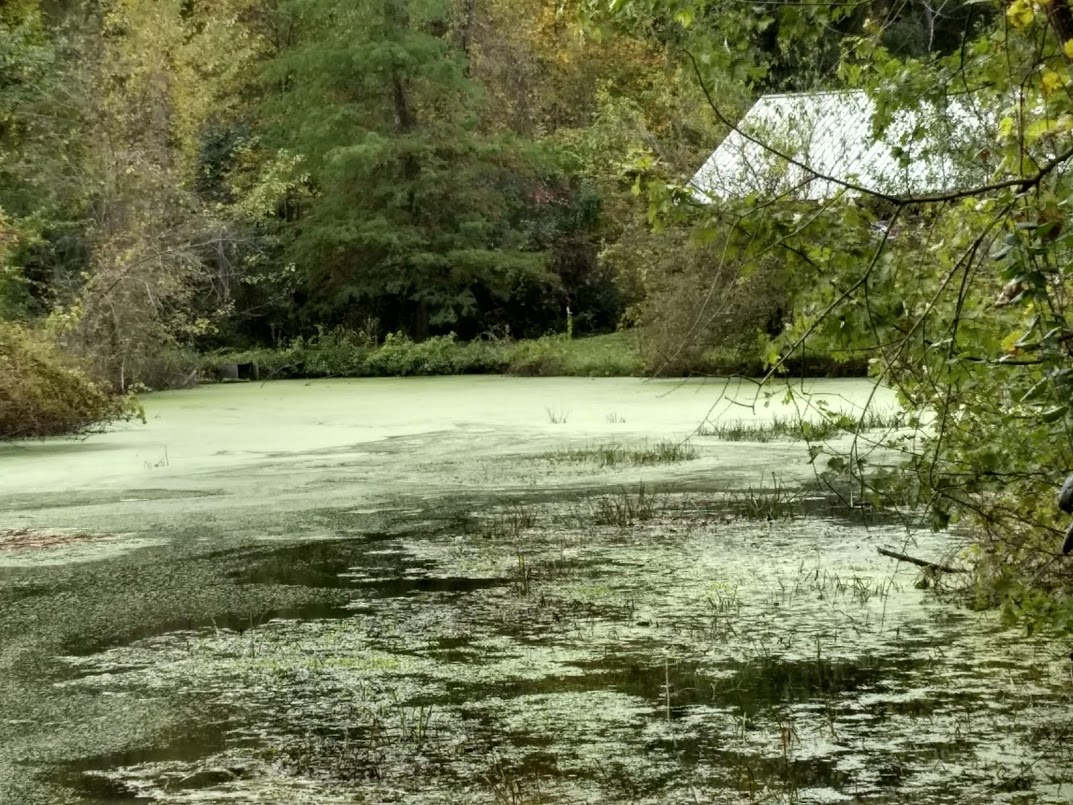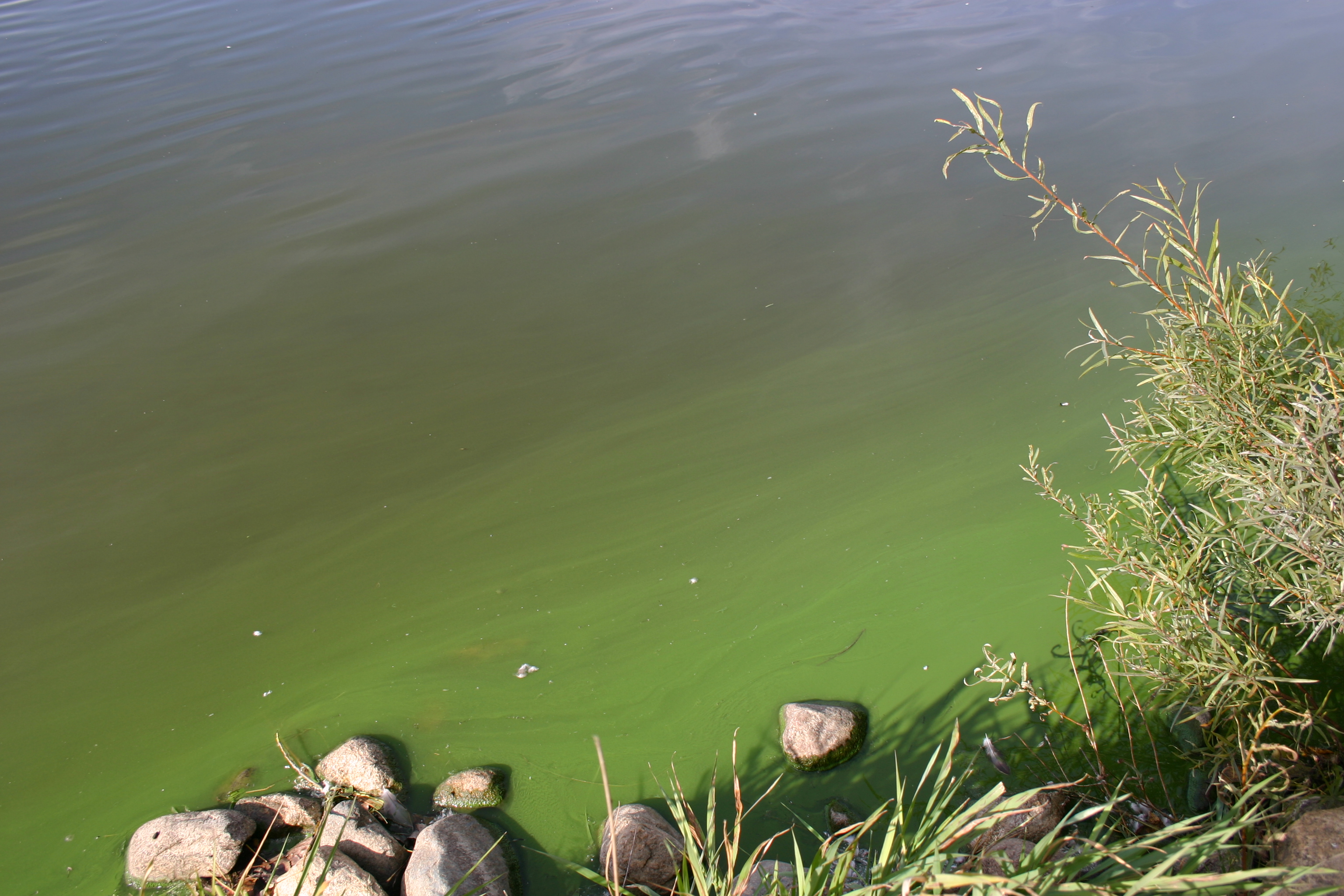What is that color in my pond?
This article explores color changes in water features, diving into what is happening in your pond that may cause these changes.

People love to live near water. We build houses near rivers and streams and along the shores of lakes and ponds, and sometimes we build ponds near our homes. In fact, almost 75 percent of Michigan’s population lives near a body of water. The need to be near water varies. For some, it’s an element of wellbeing, and for others, it’s a feeling of being close to nature.
It may come as a shock for some when the water that we value for these purposes suddenly turns from the colorless or clear blue we associate with quality lakes and ponds to another color, whether it’s green, brown, yellow or red. This article explores the color of pond water, what causes the color change and what that might mean about the water quality of a pond.
While the color of pure water looks clear, according to the U.S. Geological Survey (USGS), it actually has a slight blue tint. The natural color is partially due to the penetration and absorption of light. Shorter wavelengths like blue and violet are deflected and scattered more than the longer wavelengths of red or orange light. The scattering results in the blue color we see. The shorter wavelengths also tend to penetrate further down into the water while the longer wavelengths are absorbed in the upper part of the water. Water color is also influenced by dissolved minerals, suspended sediments, and floating plankton in the water.
An array of natural and human caused conditions can lead to color changes in surface water. Ponds may change color at various times of the year depending on organic inputs, nutrient cycling, temperature, and leaf fall. Below is a list of commonly seen pond colors and an associated cause for the color.
Common to see
- Wine or yellow/orange or tea colored – tannins from leaf fall, mainly from oaks
- Murky/muddy – silt/clay stirred bottom or sediments from recent rain events
- Green – algae. Other colors from different algal groups include:
- Yellow-green from certain planktonic algae
- Pea soup green from blue green algae (cyanobacteria), which form a scum when overpopulated
- Gold/brown – from diatoms and golden-brown algae
- Red patches – from stressed microscopic crustacea such as water fleas (daphnia)

Less common to see
- Purple/pink/reddish – purple sulfur bacteria
- Red and brown – iron-bacterial slime or sulfur bacteria
- Black or gray – manganese or reflection pond dye depending on the location
- Bright blue – pond dye used in golf course ponds, parks, and fountains
What can you do if your pond water color changes? The first step is to determine what caused the color change. One of the most common culprits for altered colors is due to nutrient loading that often results in algal blooms, turning the water green, brown and even red. Algal blooms can cause water quality problems and lead to declining oxygen levels when the algae die and decompose.

Tannins are another culprit giving the water a weak tea or wine color. Tannins are the result of decomposing leaves and wood falling into the water. Being a weak acid, tannins can lower the pH of the water, although most glacial lakes and ponds have enough buffering to temper any major pH change.
Brownish and murky looking water from stirred up sediments and sediment runoff after rainstorms may resolve themselves a day or two after the rain, but each event may also add nutrients to the water, which attach (adsorb) to the sediment particles. Planting a buffer strip around the pond can help reduce surface water runoff and slow sediment loading to the water.
A purple or pink color may mean that the water has lost its oxygen in the bottom waters, giving purple sulfur bacteria the conditions they need to build up in the water. Adding a fountain or aerator will help aerate the water but may also stir up sediment. Care must be taken to avoid making the problem worse.
Maintaining a healthy pond with plants and good water circulation can give you many years of worry-free enjoyment. Simple tips include maintaining a buffer strip, reducing nutrient and sediment runoff, and maintaining plant life for fish habitat and a healthy ecosystem.
The following documents provide information about managing ponds:
- Managing Michigan Ponds for Sports Fishing Bulletin E-1554 from Michigan State University
- Michigan Natural Shoreline Partnership for shoreline landscaping guidance
- Pond Ecology at Penn State Extension
- Ohio Pond Management Handbook from Ohio Department of Natural Resources
To learn more about ponds and lakes, contact Michigan State University (MSU) Extension. MSU Extension natural resource educators are working across Michigan to provide water quality educational programming and assistance. You can contact an educator through MSU Extension’s “Find an Expert” search tool using the keywords “natural resources water quality.”
Resource websites of interest
- USGS: Water Color
- California State Water Resources Control Board: Color of Water Fact Sheet
- Oklahoma Cooperative Extension Service: Red, Green, or Black-What Color is Your Lagoon?
- Minnesota Department of Health: Hydrogen Sulfide and Sulfur Bacteria in Well Water
- Kenyon College: Microbe Wiki-Pond Water
- Clemson University Cooperative Extension: Aeration, Circulation, and Fountains



 Print
Print Email
Email

